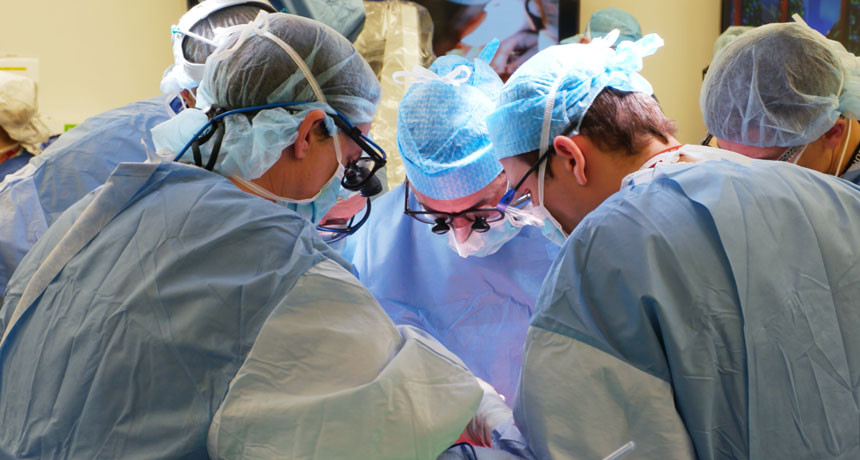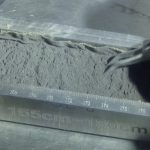The first penis-scrotum transplant is the latest to go beyond lifesaving

In a transplant first, a U.S. veteran severely injured by an explosive device in Afghanistan has received a penis and scrotum from a deceased donor.
During the 14-hour surgery at Johns Hopkins School of Medicine, doctors removed the patient’s damaged tissues and connected three arteries, four veins, two nerves and the urethra to the donated tissues. The patient is doing well and the first test — whether the surgery restored urinary function — is expected any day now. It will likely take another six months for the patient to regain sexual function. The hope, said surgical team member and plastic surgeon Richard Redett at a news conference on April 23, is that the patient will have a chance to “lead a more normal life.”
The milestone is the latest in a series of medical advances that have pushed transplant science beyond simply lifesaving. Since the first successful organ transplant — a kidney in 1954 — surgeons have gone from replacing such vital organs as hearts, lungs and livers to, in the last two decades, transplanting hands, arms, uteruses, penises and even faces. Called vascularized composite allotransplantation, these surgeries transplant multiple tissues at once. The goal: enhancing recipients’ quality of life.
The surgical team hopes this procedure paves the way to help other veterans disabled by bomb blasts to the pelvic area. “It’s a real mind-boggling injury to suffer,” the patient, who asked to remain anonymous, said in a statement released by Johns Hopkins. After receiving a full penis, scrotum and part of the abdominal wall during surgery in March, “when I first woke up, I felt finally more normal.”
Here’s a closer look at the challenges, scientific advances and ethical issues involved in such a transplant.
What was the biggest challenge?
The amount of tissue being transplanted. The patient had been referred to Redett in 2012 for conventional reconstruction surgery, which would use the veteran’s own tissues, but “his defect was just too large,” Redett says. To date, there have been three penis-only transplants, two of which have been successful. To prepare for the surgery, the Johns Hopkins team spent about five years in the lab, working on cadavers and “figuring out the blood supply to this very large piece of tissue,” Redett says. The researchers used dye to map out which blood vessels were crucial to the tissues involved and conducted mock surgeries. “We don’t have a lot of previous transplants to go on,” Redett says, “so we had many, many rehearsals with a donor and recipient cadaver, actually doing the surgery.”
Why didn’t the team also transplant the testicles?
That raises ethical issues. The testicles make sperm, so if they had been transplanted, the recipient would have potentially been able to father children that would have had the donor’s genetic material. The Johns Hopkins team decided early on not to include tissue that generates sperm in a transplant, feeling that there were too many unanswered ethical questions. Since the explosion destroyed the recipient’s testicles, he won’t be able to father biological children.
Were there other ethical considerations?
Yes. Since the mission is to improve the quality of life rather than save it, the tally of the surgery’s risks and benefits is altered. As with any transplant, there’s the possibility of rejection, so the patient must take immunosuppressant drugs for life. A tamped-down immune system raises the risk of infection, diabetes, hypertension and other illnesses. Psychological evaluation is crucial to the screening process, too. Being able to see the donated body part may challenge a recipient’s sense of self, or one may have unrealistic expectations for recovery. But one of the reasons the Johns Hopkins team became serious about the transplant, Redett says, is that the patient was an extremely motivated person. “He really wanted to do this.”
What is being done to prevent rejection?
Two weeks after the surgery, the patient received an infusion of the donor’s bone marrow cells. This transfer makes the body more tolerant of the donor tissue. With the bone marrow treatment, the patient has been able to take just one immunosuppressant drug rather than the three that are typically needed after transplantation. The Johns Hopkins team first used their bone marrow technique successfully on five patients who received hand transplants from 2009 to 2010. Other researchers have used bone marrow therapies with organ transplantation (SN Online: 3/7/12).
What’s next?
The immediate goal is to help other veterans with similar injuries. From 2001 to 2013, 1,367 U.S. servicemen serving in Afghanistan and Iraq suffered one or more genital and urinary region injuries, primarily in the scrotum, testes or penis, according to a study in the Journal of Urology in 2017. But the team also has its eye on those born with defects to the same area. “This is about the biggest transplant you can do for this region, certainly the most complex,” Redett says. “We spent a lot of time as a team trying to figure this out so we’re comfortable doing other types of penile transplants as well.”



